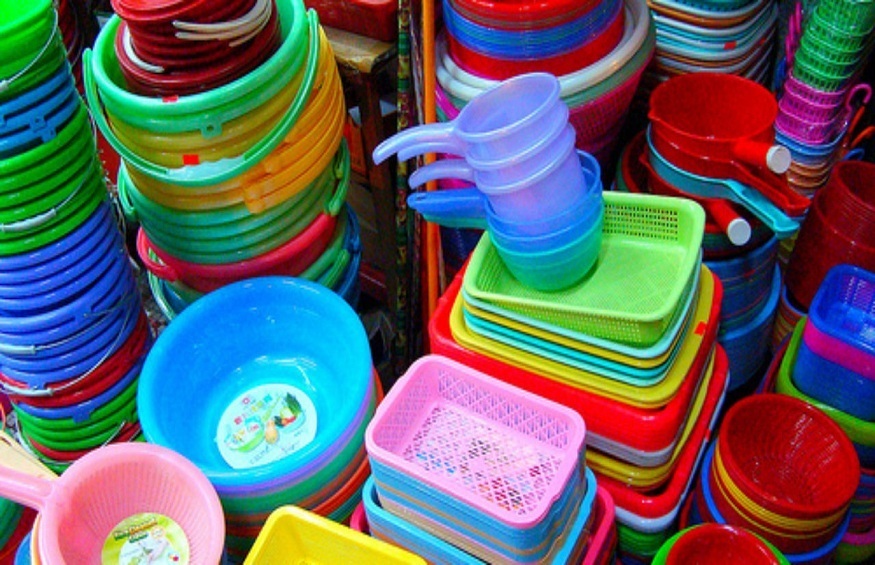Types of Plastic that You Need to Know

Plastic is a common name for man-made polymers. Chemically, these materials consist of a single entity, a monomer, which itself is linked with millions in long chains. The length of these chains, whether there are many branches, and how tightly intertwined they determine the physical properties of the final plastic. Since the mass production of plastic during World War II, manufacturing improvements have produced thousands of different types of plastic suitable for nearly every conceivable application.
Thermosetting
Thermosets are hard, durable plastic materials. This type of plastic material cannot retain its original shape. Thermosets have a wide range of uses and are used in the manufacture of aircraft parts, tires, and automotive parts. Have you heard of polyurethanes and polyesters? Well, they are all thermosets. In addition, epoxy resins and phenolic resins are also examples of thermosetting resins.
Thermoplastic
Comparing both thermosets and thermoplastics, thermoplastics are less rigid than thermosets. Then, when the thermoplastic resin is heated, it softens. Another important property of thermoplastics is that they return to their original shape when heated. It is also observed that thermoplastic materials can be easily molded. Polyvinyl chloride is used for the electric wire. This polyvinyl chloride is commonly abbreviated as PVC. This PVC resin is just one example of a thermoplastic. Polyethylene and polypropylene are also thermoplastic materials.
Here are X Types of Plastic :
1. Polyethylene (PE), is the most common and most used plastic on earth. A key to PE’s widespread use is that it can be manufactured in different densities, resulting in different mechanical properties. On the heavy end of the scale, Ultra High Molecular Weight PE (UHMWPE) is used in bulletproof vests. High Density PE (HDPE) can be used almost anywhere a cheap hard plastic is needed, such as food packaging, toys and pipes. Low-density PE (LDPE) is the king of single-use packaging, and almost every thin plastic film is made from it, from grocery bags to food wraps.
2. Polypropylene (PP), is commonly known as “prope” in the plastics industry. Polypropylene is one of the most adaptable thermoplastics. Stronger than PE, but remains flexible. It will not crack even after repeated stress. It has a high melting point, is easy to injection mold, acid resistant and most importantly inexpensive. Good old props are the second most produced plastic and are used in everything from trash cans to clear Tupperware.
3. Polyethylene terephthalate (PETE or PET), is known as polyester. Quantitatively, it is most commonly used as a textile, either alone or more commonly as an inexpensive and durable filler for other fibers. It is important food packaging to create an oxygen barrier to protect the food. Almost every clear plastic bottle you’ve ever seen, used, or thrown away was probably PET. Given the reusability of this polymer, it can wear out after a few years if thrown in the proper trash.
4. Acrylonitrile butadiene styrene (ABS), is widely used in the automotive industry for consoles, panels, panels, and vents. It has excellent strength, flexibility, and chemical resistance, and is relatively inexpensive to manufacture. It is also commonly used in boxes, gauges, cases, asthma inhalers, and toys.
5. Polyvinyl chloride (PVC), If the chloride part of the name sounds awkward to you, you’re making money. However, its use is declining due to its toxicity throughout its life cycle. It is still used in a variety of products, including clothing, non-food packaging, plumbing, and electrical wire insulation.
6. Polyamide (PA), is almost universally known as nylon. Like PE, it is available in many forms in the market with a variety of properties. It is strong and tough, and its color varies from milky white to almost clear. It is much more expensive than plastics such as PP and is typically used where toughness is important. It is often reinforced with short glass fibers and is used in situations where good impact resistance and resilience, as well as some degree of flexibility, is required, such as Seatbelt buckles and hinges.
7. Polycarbonate (PC), is Strong, stable, and transparent. Baby bottles, which were originally heavily used to preserve foods that require strength, PC tends to leach harmful chemicals, so it is mostly reused as an engineering plastic. It currently conquers the market in applications requiring clear or brightly coloured plastics with a high gloss finish, scratch resistance, and high strength. As a rule, these are products such as handhelds and light switches.
8. Polystyrene (PS), can refer to three different types. General Purpose Polystyrene (GPPS) is a brittle and inexpensive material commonly used to package products in boxes. High impact polystyrene (HIPS) is tough, impact resistant and It is used for electric parts, food containers, building materials, etc. Expanded polystyrene is PS that has been air blown into the mold and is commonly found as padding in bicycle and motorcycle helmets.
9. Polyoxymethylene (POM), is called acetal. POM is another high-strength engineering plastic that often competes with PC. Colouring is difficult because there is no transparency, unlike PC. However, it has higher heat resistance, higher stiffness, lower friction, and higher dimensional stability. Commonly used to move mechanical parts such as bindings, gears, wheels, sides, and latch parts.
10. Polyurethane (PU), One of the most chemically flexible plastics on this list, polyurethane (PU) is either thermoformable or thermoset. Injection molding often uses PU molds, which are softer and more flexible. These foams offer features such as internal seals, impact protection, and even “soft-touch” skins molded into many handheld devices to improve comfort and grip.
Uses and Benefits of Plastics
Below are the uses and advantages of different types of plastics.
Plastics contribute to the durable, sustainable, and long-lasting design and construction of buildings, dwellings, bridges, and other infrastructure.
Accessories such as computers, mobile phones, TVs, and microwave ovens are made of plastic, making them durable, lightweight, and affordable.
Various sports are made of plastic. like Plastic helmets, mouthguards, goggles, protective pads, etc. In this case, plastic contributes to safety during sports. For example, shock-absorbing plastic foam stabilizes and supports your foot. A tough plastic shell over the helmet and padding protects your head, joints, and bones.
Plastics have contributed to improving the performance, safety, and fuel efficiency of the automotive industry.
In product packaging, plastic helps protect and preserve goods and also reduces weight during transportation. This saves fuel and reduces greenhouse gas emissions.
There is an incredible range of plastics. Combined with the low cost of parts, it’s no wonder plastic is one of the most powerful and widely used manufacturing processes in use today.





